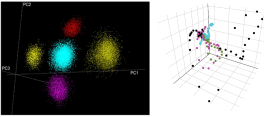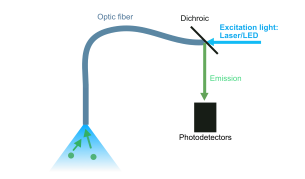We employ a diverse array of behavioral assays (Skinner boxes and arena-based assays) to investigate complex animal behaviors and cognitive processes in a preclinical context. These tools allow us to characterize genetic manipulations, pharmacological interventions, and/or brain activity modulation in the context of affective processing, behavioral traits, and/or cognitive processes. Combined with optogenetic/chemogenetic manipulations of neuronal populations and their anatomical projections, this methodology allows us to pinpoint hot spots and neuronal populations involved in the affective processing of environmental stimuli. At the same time, we rely on a small-world habitat that mimics ethologically relevant ecological conditions for rodents and allows for deeper behavioral phenotyping of complex behaviors, such as the emergence of social hierarchies and behavioral sequences.
We recently acquired a cutting-edge FEMTO3D Atlas two-photon microscope that will advance studies on neuronal computation in the brain. Combining calcium or voltage imaging with virtual reality in awake, behaving animals will deepen our understanding of the affective processing of environmental stimuli and beyond.
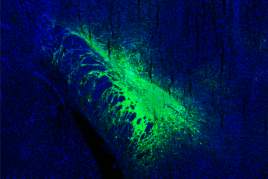
We integrate sophisticated chemogenetic and optogenetic techniques with real-time behavioral data collection systems. This allows us to perform site-specific and temporally precise manipulation of neuronal activity, coupled with behavioral phenotyping. This provides a comprehensive understanding of brain-behavior relationships. This approach allows us to dissect complex neural circuits and their functional roles in behavior with remarkable precision.

Our research methodology integrates cutting-edge ex vivo (slice) electrophysiology techniques with cell-type specific optogenetic manipulation, complementing findings from in vivo circuit analysis. This powerful combination allows us to precisely identify and characterize neuronal populations involved in affective processing along with their synaptic connectivity. By selectively manipulating the activity of specific neuronal cell types, we can dissect the intricate properties of these cells and their roles within complex neural circuits.

We routinely use in vitro imaging of second messengers like Ca2+ and cAMP to visualize intracellular signaling cascades that are triggered by neuropeptides and other neuromodulators. Our department also uses this technique to establish and develop novel tools to study neuropeptide release in the brain.
Our repertoire of molecular biology techniques includes genetic screening, analysis of gene expression through RNA-seq and RT-qPCRH, and various other basic molecular biology techniques. Next to classical histological analysis such as immunohistochemistry (IHC) for staining and imaging of neuronal markers and/or immediate early genes, we apply advanced in situ hybridization (ISH) technology designed for the detection and visualization of RNA molecules within our investigated brain areas.
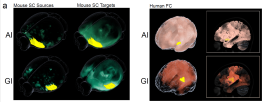
Functional Magnetic Resonance Imaging or fMRI, is the method of choice to bridge the gap between experimental research in small animals and clinical data in humans. It is a non-invasive method that allows local brain dynamics to be linked to global brain states (Image credit: Ganglberger et al., 2024; Commun Biol.)
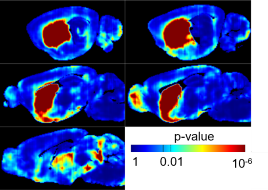
We employ a range of in-silico tools to fuse available brain and genetic data and mine them to address our scientific questions. Specifically, we explore the gene-to-behavior correlation effects to derive functional neuroanatomical maps. This allows the mapping of functional genetic associations onto brain circuitry for refining functional neuroanatomy or identifying trait-associated brain circuitry, from genetic data. Additionally, by fusing gene expression, genetic evolution, and brain activity data we investigate human brain evolution, focusing on cognitive and affective processing pathways.

